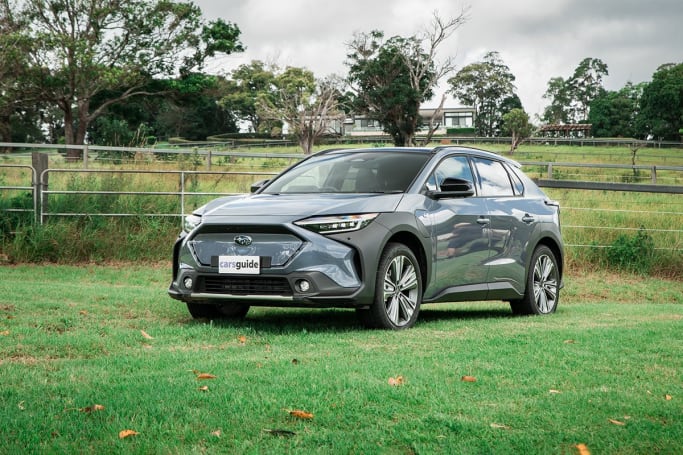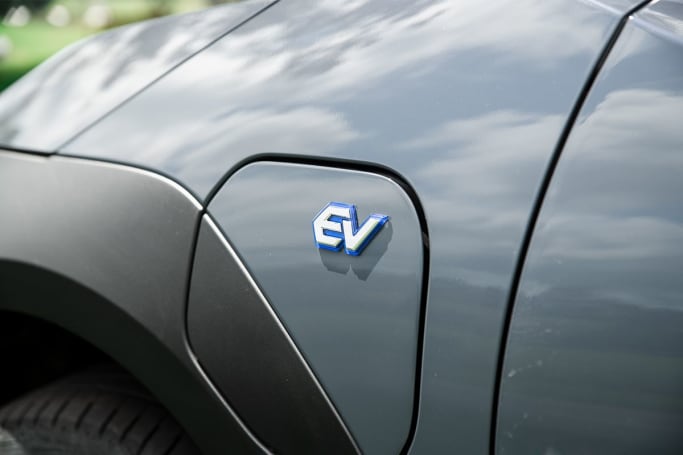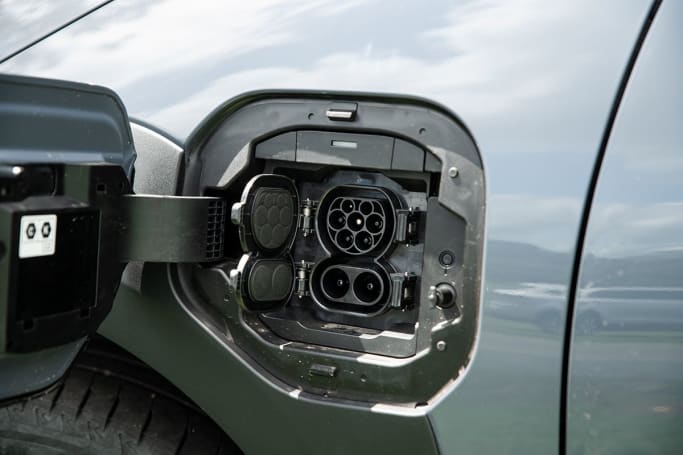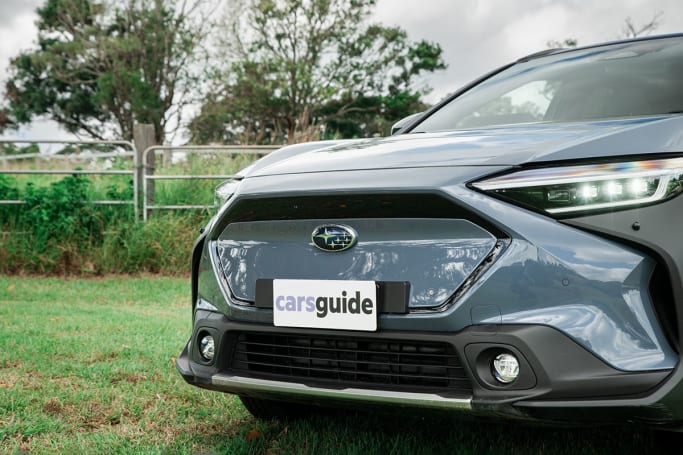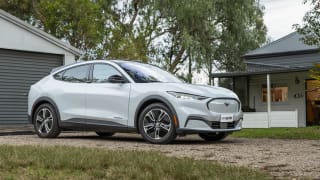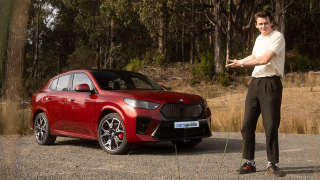Now, you might already know the Subaru Solterra isn’t entirely a Subaru - like the BRZ and 86 before it, the Solterra is a co-development with Toyota, and a sister car to the latter brand’s bZ4X.
So, it’s not as quintessentially Subaru as something like the Crosstrek, Forester, or Outback. But it’s also not just a rebadged Toyota, with Subaru responsible for developing significant parts of the vehicle, like the suspension and the all-wheel drive system.
The range is nice and simple, consisting of two variants, the base AWD, and the top-spec AWD Touring, priced from $69,990 and $76,990, before on-road costs, respectively.
Of course, in this increasingly busy segment, pricing is key, and the Solterra stands out by offering all-wheel drive at the $69,990 entry price, compared to its Toyota bZ4X sister car which is more affordable in its most basic form at $66,000, but it is also front-wheel drive.
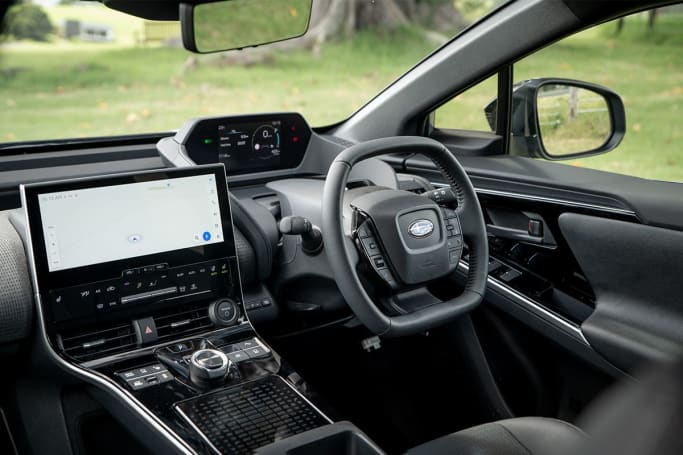
It’s the same story for its other rivals, with the entry-level Kia EV6 ($72,590) and Ford Mustang Mach-E ($72,990) both being more expensive, but the Hyundai Ioniq 5 ($65,000) and Tesla Model Y ($65,400) able to be had somewhat cheaper, although all are rear-wheel drive.
One mitigating factor, however, is range, and the Solterra offers less on paper than its aforementioned rivals. It has a 71.4kWh battery and a 414km WLTP-rated driving range, where others offer closer to or more than 500km at the same price-point.
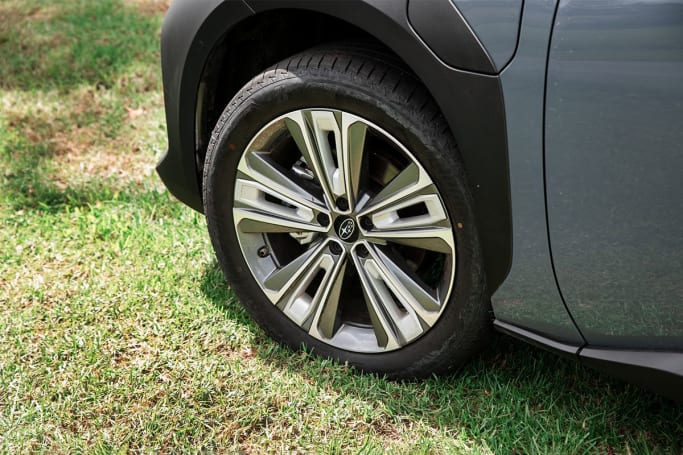
In true Subaru fashion, the standard equipment is excellent, and the base car gets the lion’s share. Included are 18-inch alloy wheels, a 12.3-inch multimedia touchscreen with wireless Apple CarPlay and Android Auto connectivity, a 7.0-inch digital instrument cluster, cloth interior trim with power adjust for the driver’s seat, a heated steering wheel, LED headlights, and a power tailgate.
It also scores standard carpet mats and a cargo tray for keeping mud off things during all your adventures. The full suite of active safety gear is standard, too, but more on this later.
Splashing the extra $7000 on the Touring grade nets you 20-inch alloy wheels, a 10-speaker Harman Kardon audio system, a wireless phone charger, synthetic leather interior trim, power adjust for the front passenger's seat, a sort of panoramic sunroof (it’s two sunroof segments with a single cover) and an intelligent self-parking feature.

Options are limited to two-tone paints on the Touring, and two charging bundles for those who want an AC charging solution at home, in either 7.0kW or 22kW forms. The Solterra is capable of 11kW charging on AC.
Upsettingly, the Solterra doesn’t offer vehicle-to-load in its current form, which dents its adventure cred a bit. What better way to show off your EV at the campground than to be able to power your entire set-up?





